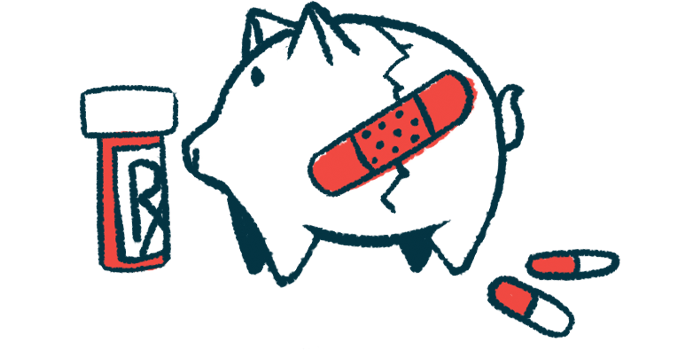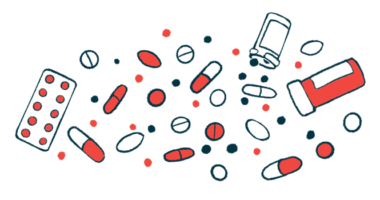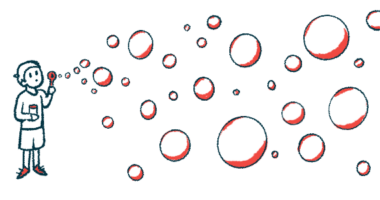Esbriet, Ofev Not Cost-effective IPF Treatment in US, Study Reports

Anti-fibrotic medications, such as Esbriet (pirfenidone) and Ofev (nintedanib), are not cost-effective treatments for idiopathic pulmonary fibrosis (IPF) in the U.S. due to their high prices, even though they remain the only effective therapies, according to a recent study.
The study, “Cost-effectiveness of the anti-fibrotics for the treatment of idiopathic pulmonary fibrosis in the United States,” was published in the journal BMC Pulmonary Medicine.
IPF is a chronic lung disease characterized by fibrosis, or scarring, in the lungs due to unknown causes. Studies have shown that healthcare utilization for those with IPF is quite high, possibly due to the disease’s progressive nature and its coexisting conditions.
Many studies have shown that anti-fibrotics, such as Esbriet and Ofev, are effective treatments for IPF. These medications have been shown to slow lung function decline, as well as possibly decrease hospitalizations and effect longer lives.
However, treatment adoption has been slow, with some data suggesting that 26%–70% of IPF patients are currently receiving anti-fibrotic prescriptions.
“One potential reason for this lower than expected adoption is their high price in the US, with out-of-pocket costs to patients of nearly $400 U.S. dollars per month for the medications and a total annual charge (out-of-pocket cost plus health plan payment) of more than $110,000 for each drug,” the researchers wrote.
Researchers argued that an analysis of how cost-effective anti-fibrotic medications are is important for patients, advocacy organizations, policymakers, and clinicians and can help inform medication pricing negotiations and possibly improve access to treatment.
Yet “to date, there has been no cost-effectiveness analysis … of the anti-fibrotic medications in the United States,” the researchers wrote.
Here, researchers took advantage of a previously published cost-effectiveness model used in the U.K. to project lifetime costs and health benefits for IPF patients in the U.S.
The annual cost of follow-up care for IPF patients, excluding anti-fibrotic medications, was estimated to be about $12,291. The annual costs for anti-fibrotic medications were $113,193 for Esbriet and $112,357 for Ofev.
Researchers used quality-adjusted life years (QALYs) — a measure of the state of health in a person or group in which the length of life is adjusted to the quality of life — to represent health benefits for patients. One QALY is equal to one year of life in perfect health.
Associated overall lifetime costs and benefits for symptom management were $79,815 and 3.78 QALYs, respectively. Lifetime costs and benefits for Ofev were estimated at $675,544 and 4.15 QALYs, and for Esbriet at $688,778 and 4.10 QALYs.
“This translates into a staggering cost of $1.6 million USD to gain one additional QALY with [Ofev], a value 16 times higher than the commonly used willingness-to-pay threshold of $100,000,” the researchers wrote.
The willingness-to-pay threshold — the amount a patient is willing to pay for health benefits — was set at a commonly used threshold of $100,000 to assess treatment cost-effectiveness.
Researchers determined that to be considered cost-effective compared with symptom management and Ofev, Esbriet would have to cost anywhere from $0-$7,075 per year. At cost values greater than $7,075 per year, the only cost-effective strategy for IPF was symptom management.
With Ofev, the price that was most cost-effective, compared with Esbriet and symptom management, was up to $7,022 per year. When cost values were above $7,022 for Ofev, symptom management was the only cost-effective strategy.
“[Esbriet] and [Ofev] were never cost-effective at current pricing when considering treatment-related outcomes, even with significant improvement in mortality, decreased rate of acute exacerbations, and decreased decline in lung function,” the researchers wrote.
Sensitivity analysis also showed that among 10,000 simulations, symptom management was cost-effective more than 45% of the time at willingness-to-pay thresholds between $0 and $1.6 million.
Ofev was cost-effective in 34% of the 10,000 simulations at a willingness-to-pay threshold of $1.6 million and became more cost-effective after the $1.6 million mark, due to its higher expected benefits compared with symptom management or Esbriet. However, Esbriet was never cost-effective as compared with symptom management and Ofev, up to a willingness-to-pay threshold of $5 million.
“While [Ofev] is somewhat more cost-effective than [Esbriet], overall the two medications are currently too expensive to be considered cost-effective treatment options for IPF,” the researchers wrote.
Researchers noted, however, that the results of the cost-effectiveness model are sensitive to changes from acute disease exacerbations. This may explain why Ofev, due to its ability to lower IPF exacerbations, was found to be slightly more cost-effective than Esbriet.
“However, even if the efficacy of the medications (including their ability to reduce acute exacerbations and death) is significantly increased as was done in our sensitivity analysis, the drugs are still not cost-effective at their current US price,” the researchers wrote.
This lack of cost-effectiveness of anti-fibrotic medications, even at lower list prices, was also seen in European studies.
“Our cost-effectiveness study … found that the anti-fibrotic medications are not cost effective treatment options in the United States,” they wrote.
“For a disease as deadly and complex as IPF, having any available medical therapy for patients remains a major breakthrough; however, policy makers, patients, clinicians, and advocacy groups should continue to assess the value the medications provide clinically while also balancing their costs,” they concluded.








